
 |
| Home | Town Views | Religious | Holocaust | Family | Other | Contact |
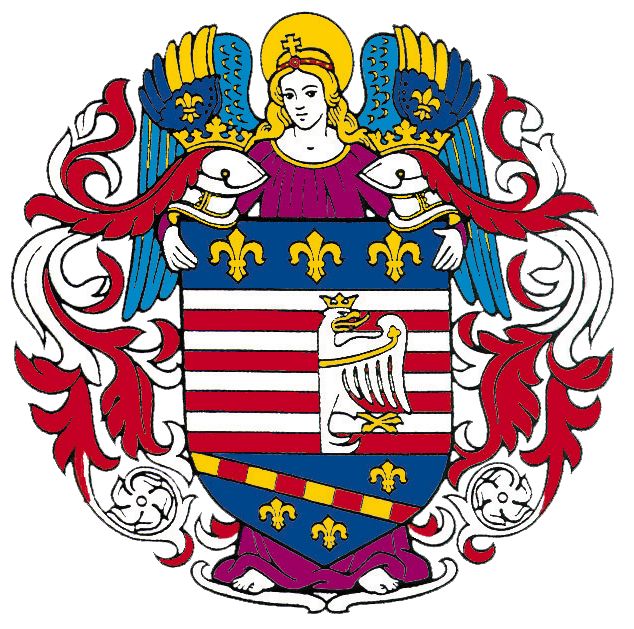 |
Košice, Slovakia |
After the initial launch of this
KehilaLinks page (September 10, 2014), the people below
have responded with the material added here.
In June 2017, Peter Absolon suggested adding Ludovit FELD to this site, to remember this artist and his work.
The photo of Rabbi Zafir's tombstone was taken by Peter Absolon, an IT professional, whose hobby is to photograph such tombstones and post them in www.findagrave.com. He was able to locate this one for Yves and his family. Thanks, Peter!
|
Rabbi Ignac (Yitzchak Zvi) ZafirImages and information courtesy of Yves Marton.
His Birth Certificate
|
Textile shop of Samu BIRNBAUM on a main street in Kosice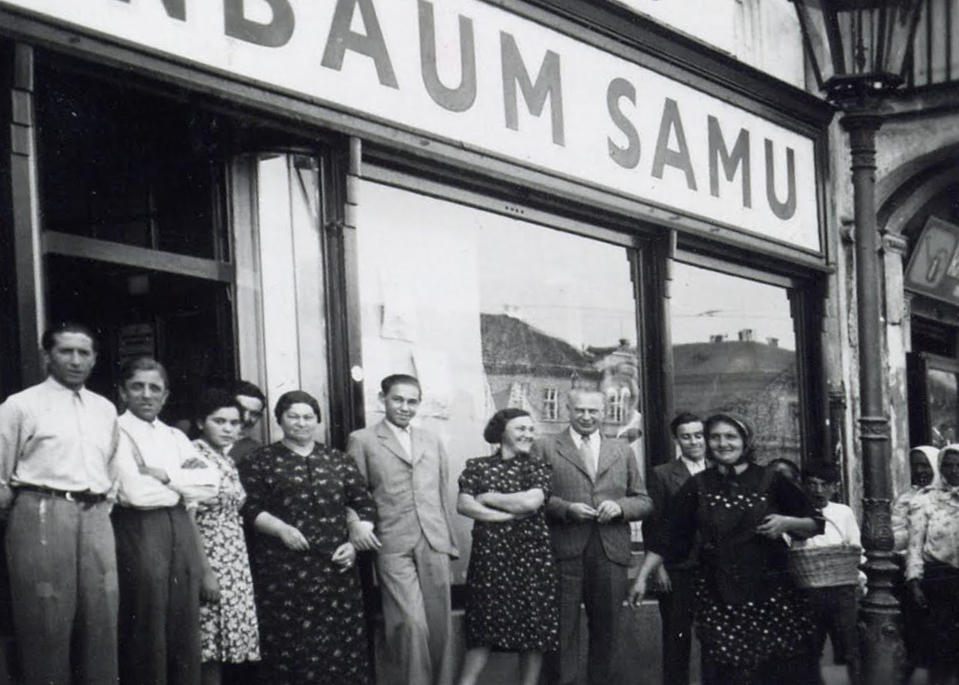 The photograph and information below are courtesy of Debbie Raff, who received it from her 3rd cousin, Judy BIRNBAUM GRINSPAN, PhD. |
|
Judy said, "The older woman in the dark flowered dress 5th from left is my paternal grandmother Otilla (Toba) MANDL BIRNBAUM (1880 - 1944), to the right of her, the skinny young man [in light colored suit] is my cousin Bela MANDL (~1922 - 2009), the man in the suit two [more] to Bela's right is my Uncle Samuel (Samu) BIRNBAUM (1903 - 1944) whose name is on the store. Per Debbie: Judy is the daughter of Joseph BIRNBAUM and Helena Nelly Eisenberg (b. May 1917 Kharkiv, Ukraine). Judy’s grandparents: Tzvi Yehuda (Hirsch Leib) Birnbaum (born in Nowy Sacz in 1844 and died in Hethars, Hungary (now Lipany, Slovakia) in Aug. 1924 (see stone) and Sheindel Lea Birnbaum (born, most likely in Nowy Sacz about 1852 and died in Hethars, Hungary (now Lipany, Slovakia) on July 7, 1925. Sheindel Lea Birnbaum was the sister of my ggrandmother. I believe that Tzvi Yehuda and Sheindel Lea were cousins although, I do not know how. Note: Debbie is the creator of the Lipany KehilaLinks site!
|
Survivors of the Venetianer Family, 1946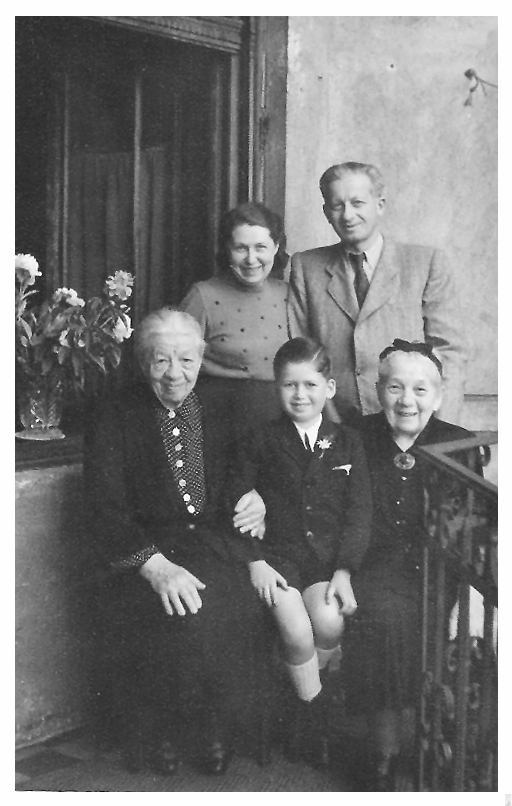
Tom Venetianer, born in Slovakia, now lives in Sao Paolo, Brazil. Tom identified the people: "Standing are my parents, Elisabeth and Alexander Venetianer. Sitting are my grandmother Adela, me and my grand-aunt Julia (Julka).Tom has ancestry connected to the town of Kezmarok, his great-grandfather, Nathan Neta Venetzianer, who had many roles in the community, while also having been something of the town's historian. See Jewish Religious Life in Kezmarok for more information. Read more about Tom's background and the book he has published in two volumes, "The Holocaust in Slovakia." Some sample chapters can also be accessed there. Or contact Tom directly"
|
The Family of Zahava SZASZ STESSELDr.
Zahava SZASZ STESSEL, a retired librarian
for the New York Public Library, was born in
Abaujzanto and has written two books. The first is
mentioned below, published in 1995, and the later
one is "Snow Flowers: Hungarian Jewish Women in an
Airplane Factory, Markkleeberg, Germany" published
in 2009. Zahava and her sister (now known as Hava
GINSBURG) survived their incarceration in
Markkleeberg. Here, Zahava shares photos of her
Kosice relatives.
|
Vivian KAHN's SIMKO Family
|
||||
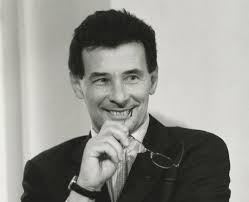 Stefan
and Kovinka's sons Dusan and Pavel were born in
Kosice after WW II. Dusan SIMKO, was born in Kosice in
1945; his younger brother Pavel was born in Kosice
in 1947 and now lives in the USA. Stefan
and Kovinka's sons Dusan and Pavel were born in
Kosice after WW II. Dusan SIMKO, was born in Kosice in
1945; his younger brother Pavel was born in Kosice
in 1947 and now lives in the USA. Dusan (photo at left) is a professor at the University of Basel and well-known Slovak author whose work has also been translated into Hungarian. Read the transcript of Roman Sorger's interview with Dusan in 2013. Dusan also wrote the script for video "The Sixth Battalion" about the Slovak version of the Labor Battalion. |
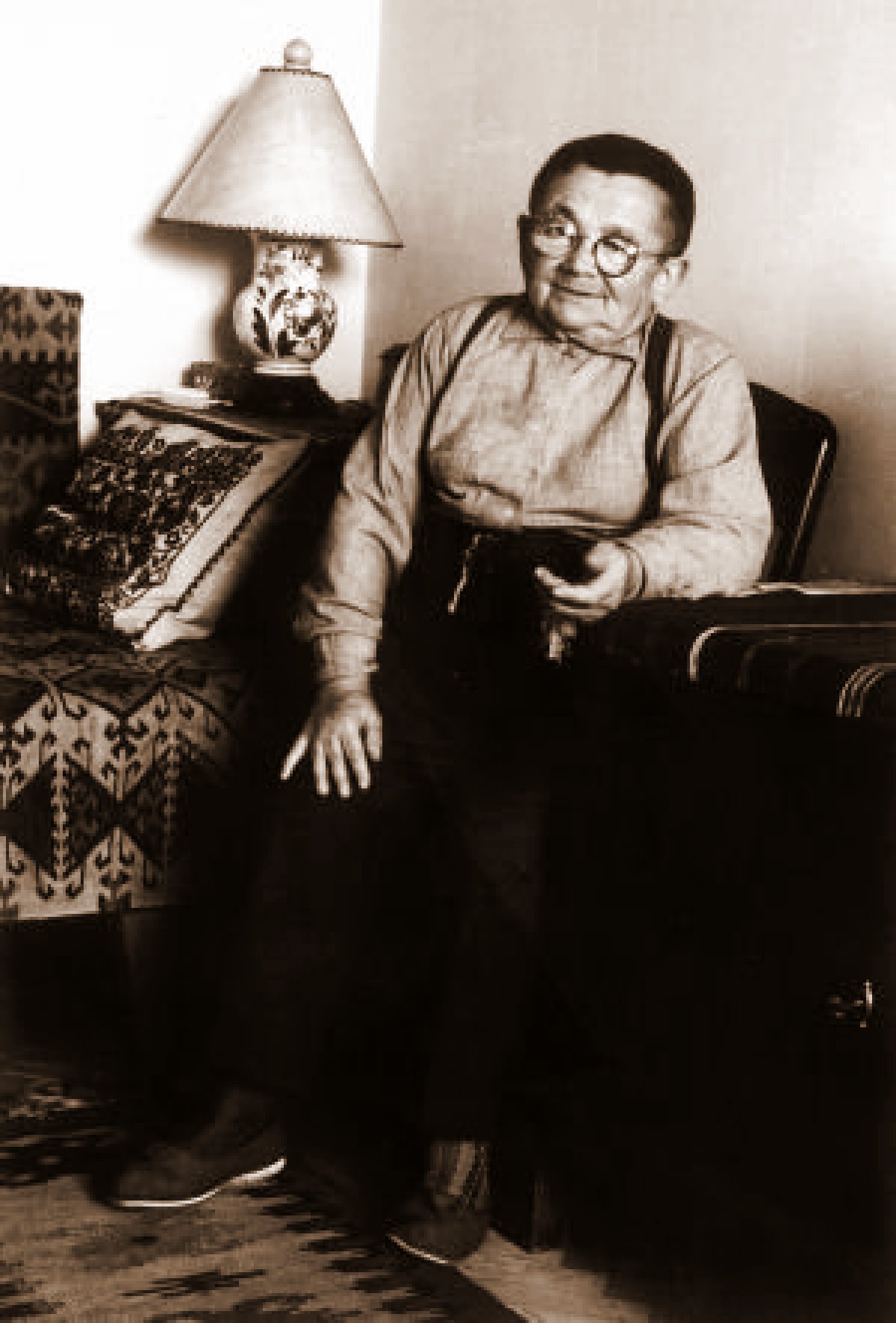 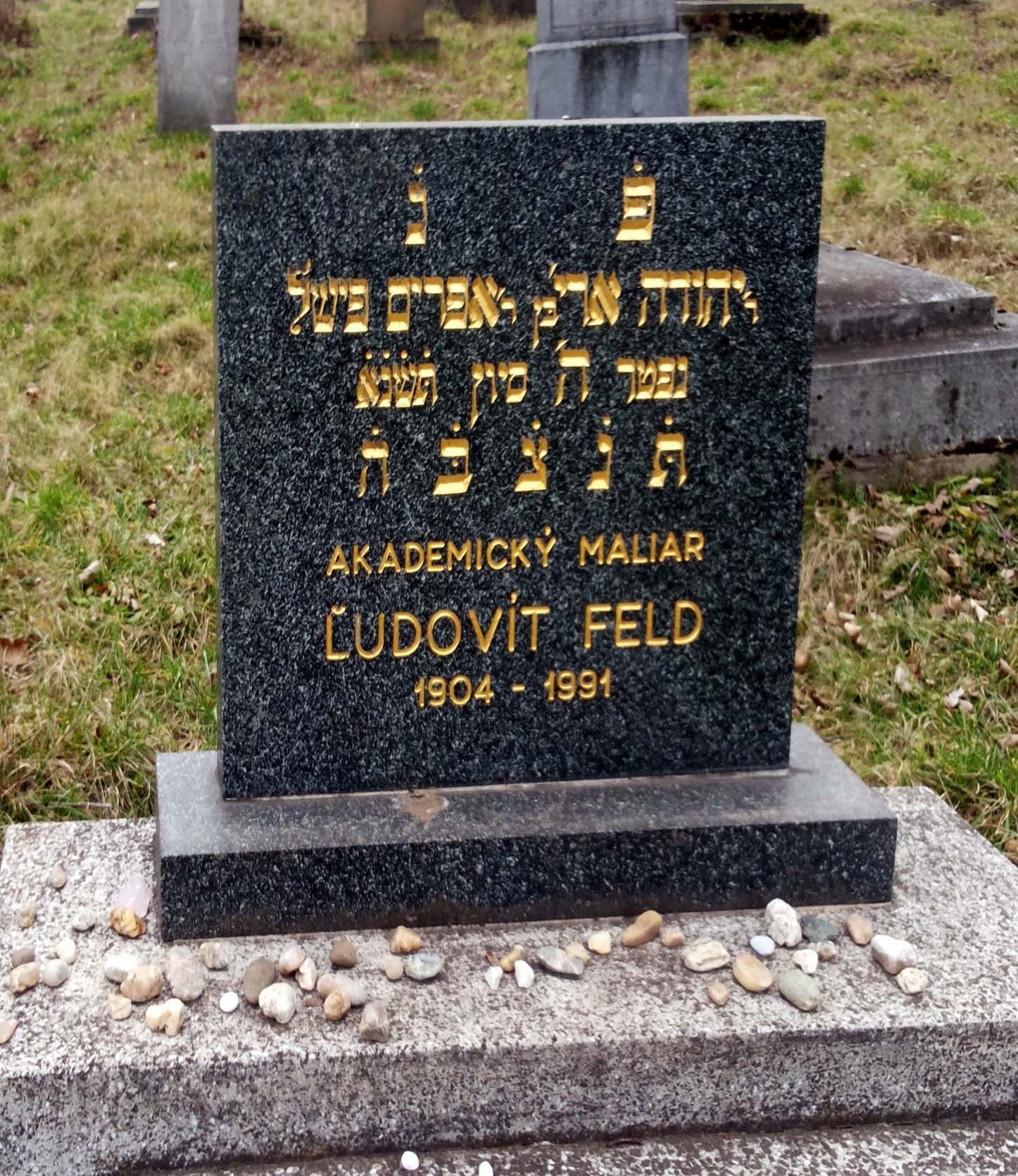
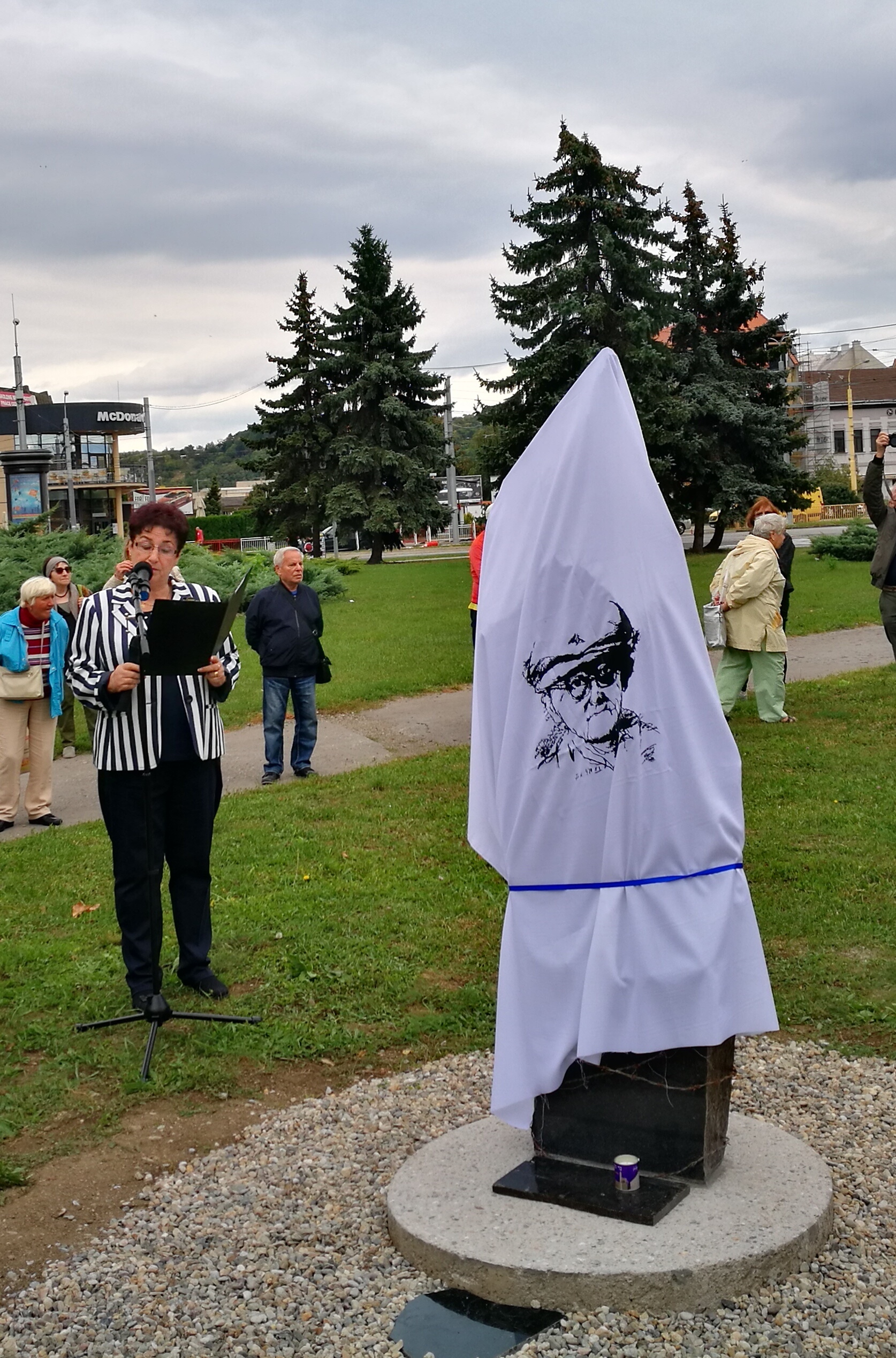 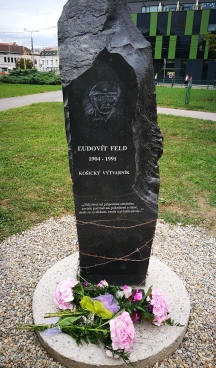
|
Not knowing who might be the family
of Ludovit FELD, Peter Absolon felt that it was
appropriate to remember the Kosice-born artist,
Ludovit FELD. He survived the Holocaust and is buried in the Kosice cemetery. Peter supplied both the photo at left and the tombstone. Judging by the number of stones placed at the base of his stone, he has been gone more than 25 years, but is certainly not forgotten. Adapting from the tribute words on the findagrave website, provided by Helaine M. Larina, "...as a 'little person,' he was among those taken in the attempt to exterminate all of the Jews during WW2. He was deported to Auschwitz and discovered by Dr Josef Mengele, who was interested in the unusual and unique. Since Ludovit was a little person he was not sent to the gas chamber but to Dr Mengele who experimented on him as well as many other little people including those of the Ovitz family..." His black marble stone in the Jewish Cemetery bears his given Hebrew names and that of his father: Yehuda Aryeh, son of Ephraim Fishel, died 5 Sivan 5751. Words in Slovak, imply Academic Painter (i.e. artist), 1904 - 1991 Peter also created a site in Geni for Ludovit and you can see samples of his beautiful artwork there. To read more about him, see the article by Silvia FISHBAUM, who was his student: Unforgettable Uncle Lajos: The Life & Legacy Of Ludovit Feld, that appeared in the Jewish Press, 8 February 2017. On Sunday, 23 September 2018, a ceremony was held in small park close to city center, named after the dwarf painter artist Ludovit Feld. A memorial was unveiled in his memory. This was driven by the artist's student Silvia Fishbaum née MOSKOVICS, who now lives in New York, and Jana Tesser, who acts as curator of Feld's gallery. Jana is shown standing next to the memorial, awaiting to be unveiled. |
| |||||||||||||||||||||||||||||||||||||||||||||||||||||
|
In August 2022,
A. GLASNER shared with us a document written in Hungarian that she found among her late mother's effects. (Her mother, was born Judith REICH, in Kosice, in 1925.)
This was a sort of memoir, written by Laci “Noé” RATONYI, in 1962, when he was 52 years old in which he remembers names of friends and names of shops and who either owned them and/or worked there.
Despite attempts to use online translators the results of his writing have been too difficult to make sense of. A PDF of the original may be seen and read here.
On the adjoining column are some pieces of information that might make sense to those who had connections to Kosice, pre-World War II. The contents may have errors but what is shown here was done to the best of this webmaster's ability.
He was born on 5 July 1910, as Laszlo RATONYI, in Kosice. He was the son of Vilmos and Berta GROSZ. A record of his parents’ marriage indicates that Vilmos' father's family name was originally REICH.
He had two older sisters: Gabriella, b. 29 June 1906; and Magdolna, b. 18 Jun 1907, who converted to Roman Catholicism, in 1941.
From the first page of his memoir, these are presumably some of his friends' names, listed alphabetically by family names:
|
In his memoir, he takes a "walk down memory lane" recalling the names of shops and about the people in them, for shops that were there 1910-1938. He starts with Fö utca and shops on either side of that street and then presumably some other streets. The table below was translated electronically for page 4 of the PDF noted in the adjoining column.
Pages 5-14 of that PDF comprise more names of shops and have not been translated. The reader, who can understand the language, is encouraged to check the contents for him/herself.
|
||||||||||||||||||||||||||||||||||||||||||||||||||||
|
The following material about the SCHWARZ (or SCHWARTZ) family was provided by Charles White, of Baltimore. MD, USA. Moritz Schwartz of Kosice and his Family: A Brief Memoir
OriginsMoritz Schwartz was the brother of my great-grandmother Mariska (Maria) Weisz (nee Schwartz). They were the only two children of Herman (Avraham Zvi) Schwartz and Reizel Schwartz (nee Reisz). Moritz, the older of the two, was born in 1879 in Nizny Caj, Hungary (also Alsocsaj), about 10 miles southeast of Kosice. In 1904, Moritz married Fani Grunberger of Gálszécs (now Sečovce). The couple’s first two children, Sandor and Zoltan were born in Nizny Caj shortly thereafter. KosiceIn 1907, the young family moved to Kosice, then a part of Hungary and called Kassa. Between 1907 and 1919, Moritz and Fani had six more children (Bela, Tibor, Hugo, Wilmos, Margo and Miksa). Moritz served as a patriotic member of the Hungarian Army during World War I, as did many Hungarian Jews. After the defeat of the Austro-Hungarian Empire in 1918, the city became part of Czechoslovakia and was known as Kosice. For many years, the family lived at Bocskay krt. 7, a property with a view of the Hornád River that flows through Kosice. The pictures of the family shown here were taken at that house. Moritz and Fani were fair but strict parents. As described by daughter Margo, the family was very loving and close but somewhat raucous as there seven boys and she was the only girl. For vacation, the family sometimes traveled to the High Tatra Mountains, 80 miles northwest of Kosice.Around the time of the family’s move to Kosice, Moritz opened a dairy business with a focus on cheese manufacturing. It was very much a family shop. Over time, it became a highly successful import-export business, supplying dairy products within Czechoslovakia and to neighboring countries such as Austria and Hungary. April to July was the busy season when all hands were needed. The advertisement for the company dating from around 1940 highlights its production of cottage cheese. The Schwartzes were Orthodox Jews. Shabbos and the Holidays were strictly observed. Because they were a well-to-do family, meals were often shared with travelers or those who were less fortunate. Moritz was a scion of the Jewish community in Kosice. For many years, he served as a leading member of the Orthodox Chevrah Kadisha, including as president, according to his son-in-law. He is listed as a Chevrah Kadisha member in a summary of interwar Jewish organizations of Kosice. Moritz expected that the Schwartz children would choose a mate when they reached their 20s. He did not involve himself in selecting the future spouse but the partner had to meet with his approval. Four of the children, Sandor, Zoltan, Bela and Margo ultimately married. Between them and their spouses, they produced seven grandchildren. Margo married in 1936 and followed her husband, Tibor RICKMAN to Miskolc, Hungary, where he ran a dental clinic, while the other family members remained in Kosice. World War II and its AftermathIn November 1938, after the Nazis annexed Czechoslovakia. Kosice was ceded to Hungary, and a series of Hungarian Anti-Semitic laws was applied to Jews in the city. In 1939, Moritz was stripped of his license for the dairy business, and he and the family members attempted to eke out a living in other ways, including in the mineral business. Forced labor service for Jewish men (munkaszolgálat) began in 1939. Inductees into the labor service were treated far more harshly than regular military soldiers, assigned to backbreaking work and poorly fed, leading to a high rate of death. Several of the older Schwartz boys were drafted into the munkaszolgálat in 1941 including Sandor and Zoltan. Zoltan was sent to the Ukraine. At least one of the brothers was sent to Yugoslavia. Margo’s husband, Tibor Rickman, was also inducted into the forced labor service and was soon taken prisoner by the Russian Army. He remained captive for six years.The situation in Kosice (now again named Kassa) became dire after the occupation of Hungary by Germany in March 1944. On April 16, the Germans and their Hungarian collaborators established a ghetto in the Jewish part of the city. At the same time, Sandor, Bela, and probably Tibor and Wilmos, were discharged from the forced labor service and returned to Kosice. Zoltan did not return and died in the Ukraine in February 1945. In May 1944, nearly the entire Jewish population of Kosice and the surrounding area, between 13,000 and 14,000 people, was deported to Auschwitz. Among these were Moritz and Fani Schwartz, Sandor, his wife and their two children, Zoltan his wife and their two children, Bela, his wife and their child and presumably Tibor and Wilmos. Most were probably murdered on arrival or shortly thereafter. Bela was transferred to Flossenberg Camp, and ultimately died in Buchenwald Camp in late 1944. Only Zoltan’s wife, Helena Freireich and the eldest of Sandor’s children, Alfred (last name later changed to Alexander Shachory/Shchory) survived the war. Bela was transferred to Flossenberg Camp, and ultimately died in Buchenwald Camp in late 1944. Only Zoltan’s wife, Helena Freireich and the eldest of Sandor’s children, Alfred (last name later changed to Alexander Shachory/Shchory) survived the war. |
Margo and her two children avoided deportation to Auschwitz from the Miskolc ghetto and they along with Hugo and Miksa made their way to Budapest. Budapest was considered the safest location and the family had relatives there, including Mariska and Henrik Weisz, my great-grandparents. In October 1944, the Arrow Cross Party (Nyilaskeresztes Párt) assumed power in Hungary. They instituted a brutal regime including the murder of as many as 15,000 civilians, mostly Jews and Romani, many on the banks of the Danube river in Budapest. Youngest sibling, Miksa Schwartz was one of those murdered along the Danube.
The Russian Army ended the reign of terror in January, 1945 when it captured Pest, causing the collapse of the Arrow Cross Party. Of Moritz and Fani’s eight children, only Hugo and Margo survived the war. However, tragedy soon struck again. In November, 1945 Hugo was killed in Miskolc by a Russian soldier who stole his leather coat and watch. Margo and her two children were ultimately reunited with husband Tibor after his release in 1948. In 1956, the family emigrated to England and later to California where their descendants live today.
|
|
10 September 2014 Updated 10 September 2023 Copyright © 2014-2023 All rights reserved. |
Top
of Page
This
site is hosted at no cost by JewishGen, Inc., the Home
of Jewish Genealogy. If you have been aided in your
research by this site and wish to further our mission
of preserving our history for future generations, your
JewishGen-erosity is
greatly appreciated.